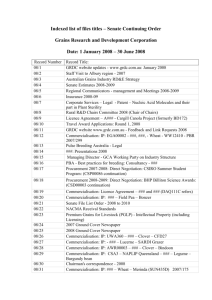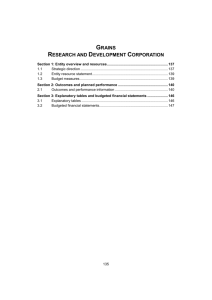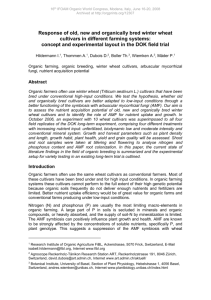Date here - Grains Research & Development Corporation
advertisement
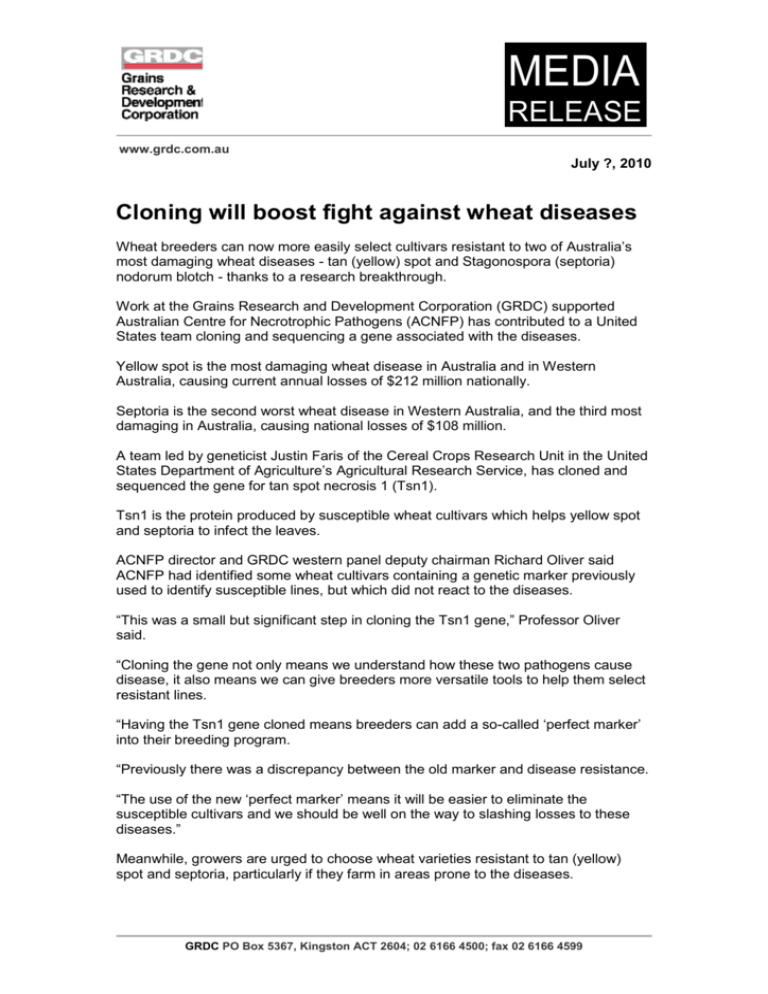
MEDIA RELEASE www.grdc.com.au July ?, 2010 Cloning will boost fight against wheat diseases Wheat breeders can now more easily select cultivars resistant to two of Australia’s most damaging wheat diseases - tan (yellow) spot and Stagonospora (septoria) nodorum blotch - thanks to a research breakthrough. Work at the Grains Research and Development Corporation (GRDC) supported Australian Centre for Necrotrophic Pathogens (ACNFP) has contributed to a United States team cloning and sequencing a gene associated with the diseases. Yellow spot is the most damaging wheat disease in Australia and in Western Australia, causing current annual losses of $212 million nationally. Septoria is the second worst wheat disease in Western Australia, and the third most damaging in Australia, causing national losses of $108 million. A team led by geneticist Justin Faris of the Cereal Crops Research Unit in the United States Department of Agriculture’s Agricultural Research Service, has cloned and sequenced the gene for tan spot necrosis 1 (Tsn1). Tsn1 is the protein produced by susceptible wheat cultivars which helps yellow spot and septoria to infect the leaves. ACNFP director and GRDC western panel deputy chairman Richard Oliver said ACNFP had identified some wheat cultivars containing a genetic marker previously used to identify susceptible lines, but which did not react to the diseases. “This was a small but significant step in cloning the Tsn1 gene,” Professor Oliver said. “Cloning the gene not only means we understand how these two pathogens cause disease, it also means we can give breeders more versatile tools to help them select resistant lines. “Having the Tsn1 gene cloned means breeders can add a so-called ‘perfect marker’ into their breeding program. “Previously there was a discrepancy between the old marker and disease resistance. “The use of the new ‘perfect marker’ means it will be easier to eliminate the susceptible cultivars and we should be well on the way to slashing losses to these diseases.” Meanwhile, growers are urged to choose wheat varieties resistant to tan (yellow) spot and septoria, particularly if they farm in areas prone to the diseases. GRDC PO Box 5367, Kingston ACT 2604; 02 6166 4500; fax 02 6166 4599 MEDIA RELEASE www.grdc.com.au “Growers should choose resistant varieties and therefore reduce or eliminate the need for foliar fungicides,” Professor Oliver said. “This advice applies particularly to wheat sown into wheat stubble. “Choosing resistant varieties will put downward pressure on inoculum levels of these damaging diseases.” Growers can obtain information on state-based disease resistance ratings for wheat varieties by visiting the National Variety Trials (NVT) website www.nvtonline.com.au The NVT program, funded by the GRDC, involves more than 580 trials sown at more than 250 locations each year. The GRDC recently recontracted ACNFP research work, led by Professor Oliver, with the Curtin University of Technology. CAPTION: ACNFP director Professor Richard Oliver. GRDC Project Code: UMU00022 Contact: Natalie Lee Cox Inall Communications 08 9864 2034; 0427 189 827 GRDC PO Box 5367, Kingston ACT 2604; 02 6166 4500; fax 02 6166 4599

![GRDC - Travel Award Final Report Form [Word 103 KB]](http://s3.studylib.net/store/data/006960459_1-4d9834314a1cadd595d32e49951195ff-300x300.png)

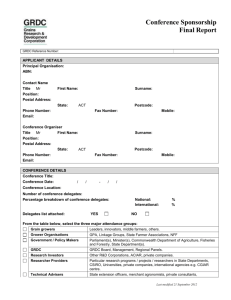

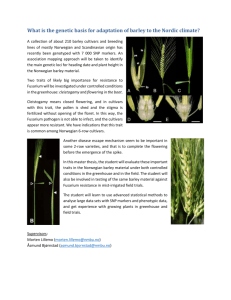
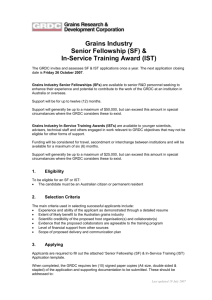

![GRDC - Instructions for completing Tender form [Word 78 KB]](http://s3.studylib.net/store/data/007290140_1-842ddda5bf3f0cef70a15623c3d5d5d3-300x300.png)
